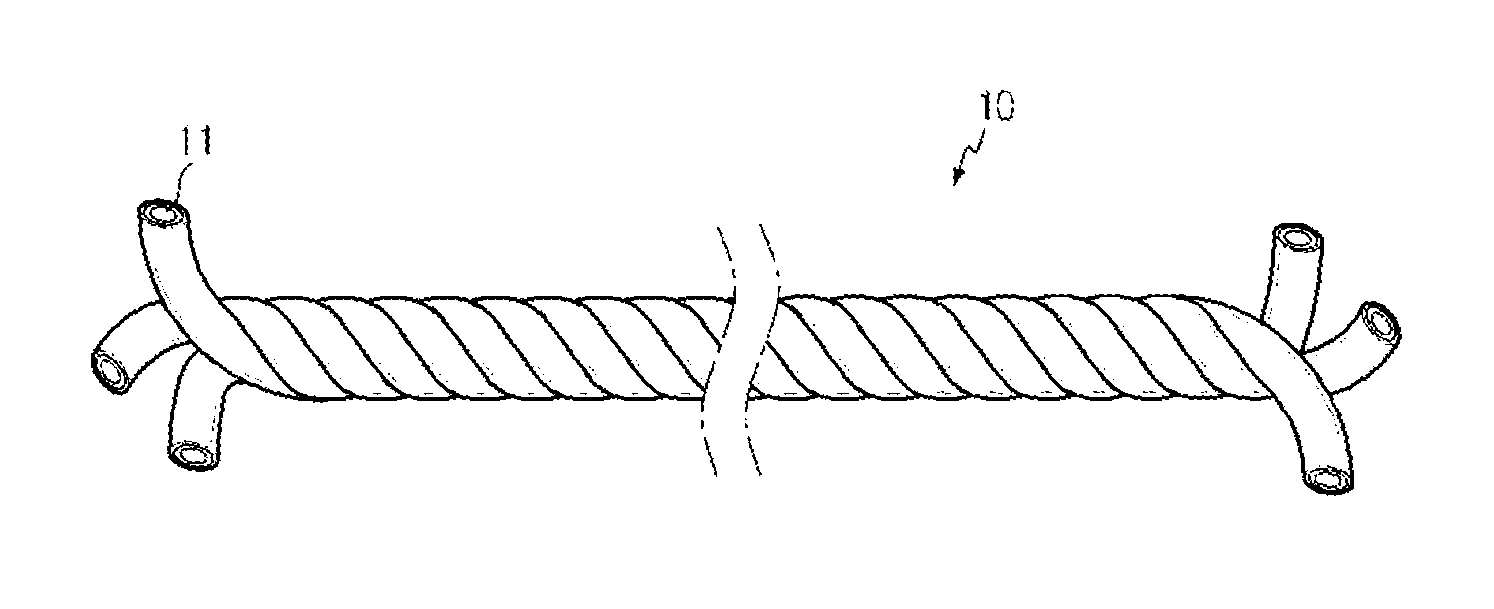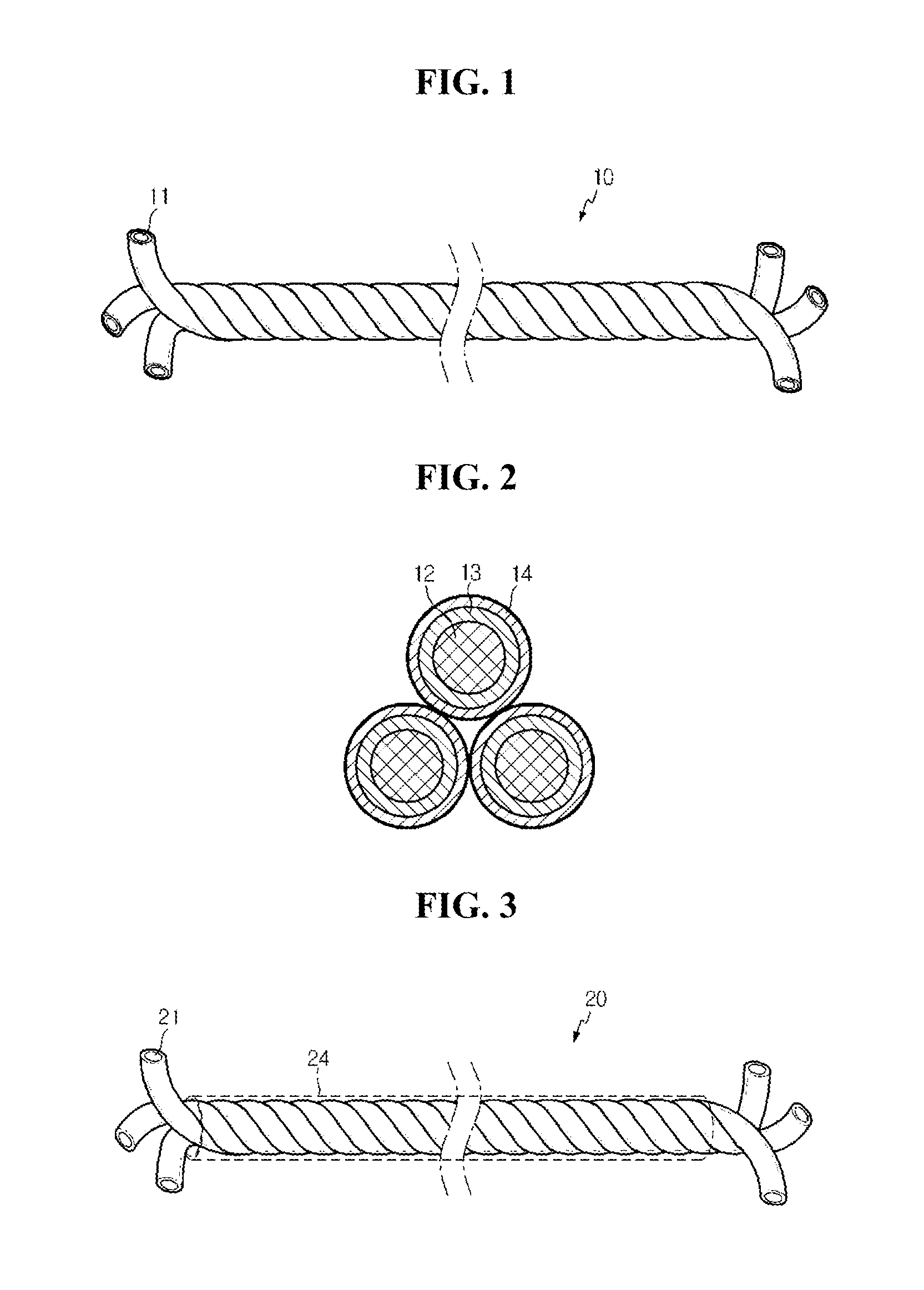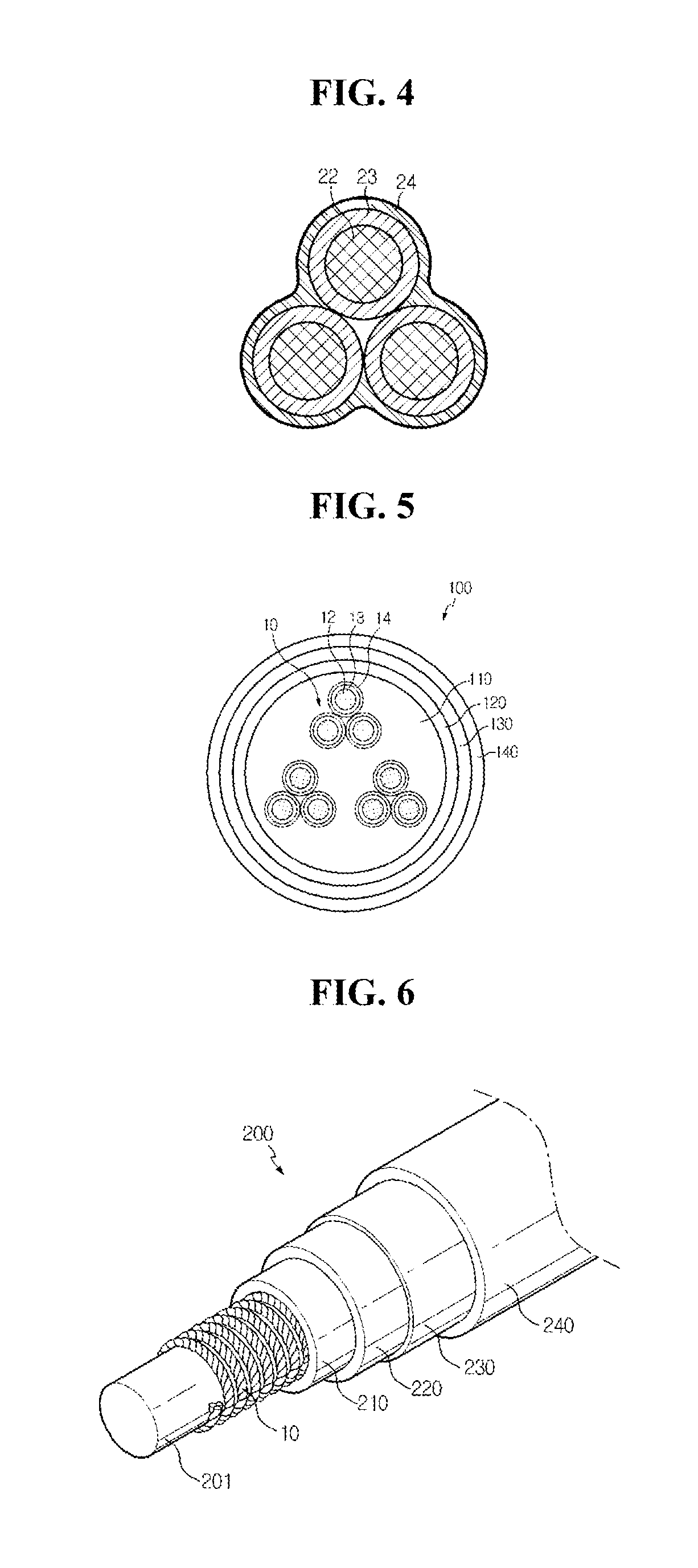Anode for cable-type secondary battery and cable-type secondary battery comprising the same
a secondary battery and anode technology, applied in the direction of batteries, sustainable manufacturing/processing, wound/folded electrode electrodes, etc., can solve the problems of prismatic or pouch shape of secondary batteries, limitation in the development of various shapes of mobile devices, etc., to prevent the deterioration of battery performance
- Summary
- Abstract
- Description
- Claims
- Application Information
AI Technical Summary
Benefits of technology
Problems solved by technology
Method used
Image
Examples
example 2
[0084]A lithium foil was used as a cathode, and the wire-type electrode prepared in Example 1 was made in a coil form like mosquito coils and used as an anode. A polyethylene separation film was interposed between the anode and the cathode to obtain an electrode assembly.
[0085]Then, the electrode assembly was put in a battery case. Thereto, 1M LiPF6 of non-aqueous electrolyte solution obtained by adding LiPF6 to a non-aqueous solvent of ethylene carbonate and diethyl carbonate (½ vol / vol %) was introduced, to prepare a coin-type half-cell.
experimental example 1
Evaluation for Electrode Release
[0089]The wire-type electrodes prepared in Example 1 and Comparative Example 1 were each wound in a cylindrical bar having a diameter of 1.5 mm, and a degree to which each anode active layer was released was observed for comparison.
[0090]As shown in FIG. 8, the wire-type electrode of Example 1 was not subject to any release. In contrast, as shown in FIG. 9, the wire-type electrode of Comparative Example 1 was subject to partial release.
experimental example 2
Evaluation for Battery Performances
[0091]The coin-type half-cells prepared in Example 2 and Comparative Example 3 were evaluated for their charge / discharge characteristics.
[0092]Charging was conducted with a constant current of 0.1 c up to 5 mV at constant current and then maintained with a constant voltage of 5 mV, and the charging was completed when a current density reached 0.005 C. Discharging was conducted with a constant current of 0.1 c up to 1 V at constant current. Such a charging / discharging procedure was repeated 30 times under the same conditions.
[0093]FIG. 10 is a graph showing the results of the performance test for coin-type half-cells prepared in Example 2 and Comparative Example 3.
[0094]In the coin-type half-cell having a polymer resin layer which was prepared in Example 2, resistance increase did not occur within the cell, and also battery performances were confirmed to be equivalent to those of the coin-type half-cell prepared in Comparative Example 3 which corres...
PUM
| Property | Measurement | Unit |
|---|---|---|
| thickness | aaaaa | aaaaa |
| thickness | aaaaa | aaaaa |
| thickness | aaaaa | aaaaa |
Abstract
Description
Claims
Application Information
 Login to View More
Login to View More - R&D
- Intellectual Property
- Life Sciences
- Materials
- Tech Scout
- Unparalleled Data Quality
- Higher Quality Content
- 60% Fewer Hallucinations
Browse by: Latest US Patents, China's latest patents, Technical Efficacy Thesaurus, Application Domain, Technology Topic, Popular Technical Reports.
© 2025 PatSnap. All rights reserved.Legal|Privacy policy|Modern Slavery Act Transparency Statement|Sitemap|About US| Contact US: help@patsnap.com



